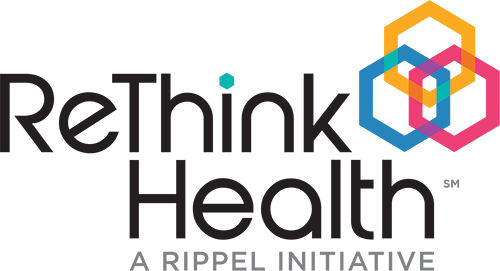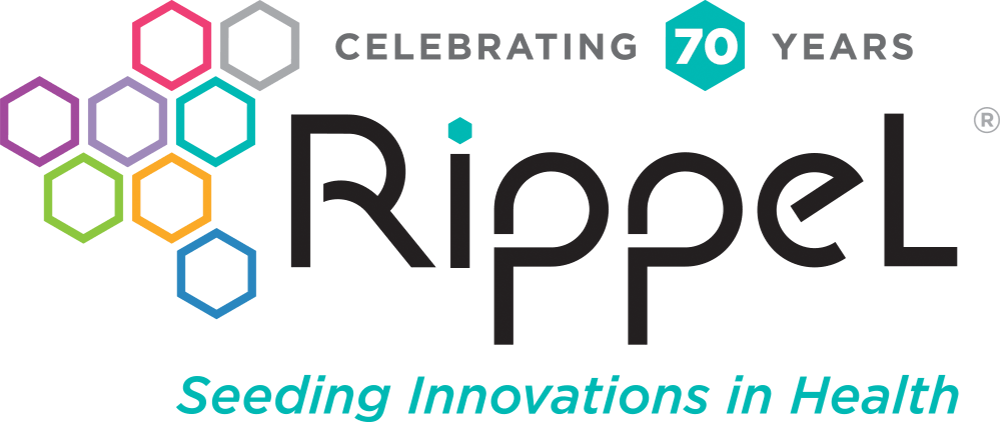Portfolio Design for
Healthier Regions
Whether you are aware of it or not, the region you live in has a portfolio of investments being made toward the health and well-being of its population. Few of us really think about it that way, however, because it’s not a coordinated set of investments from some kind of single, regional purse. Instead it’s a group of mostly siloed investments that each organization impacting health and well-being is making on its own.
When regional stewards begin to wonder about their potential to bring about the kind of ecosystem their region really needs for health and well-being, it’s worth asking whether the region’s existing portfolio of investments is effective. And, if it isn’t, what’s the path stewards could take to ensure effective resource allocation in the future? The Portfolio Design for Healthier Regions project is working with stewards as they take on these important questions, to begin to figure out how to answer them.
What does it take for stewards to reallocate resources to improve their regional health ecosystem?
Getting Started
In 2018, ReThink Health released the Negotiating a Well-Being Portfolio Toolkit, a tool we had been testing with stewards working together in regions across the country for a few years prior. In our tests, we asked every steward in the room to consider where the investments they have some say in are directed, write them on sticky notes, and place them on the wheel.
The wheel has two sides: one for efforts that provide urgent services (the kind anyone under adversity would need to temporarily regain or restore their health and well-being) and one for the efforts that not only have the potential to improve health and well-being but also prevent harm and avert the need for urgent services. Efforts on this second side of the wheel seek to create vital, systemic conditions that people depend on to be healthy and well. They are usually tackling problems at the system level, whereas urgent services are tackling important problems with solutions that will only address the problem on a temporary, isolated basis. Urgent services will always be needed, but there is a question about how much they’ll be needed as stewards improve their region’s vital conditions.
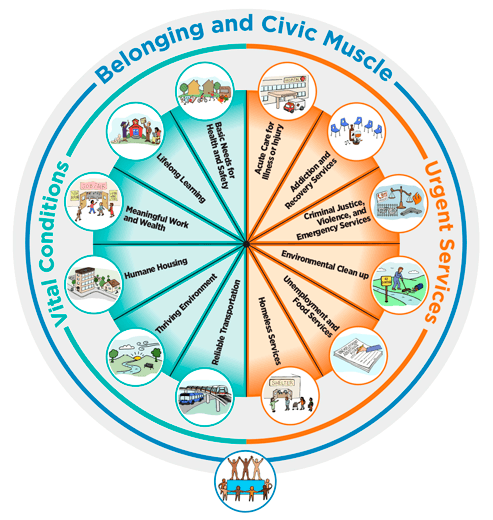
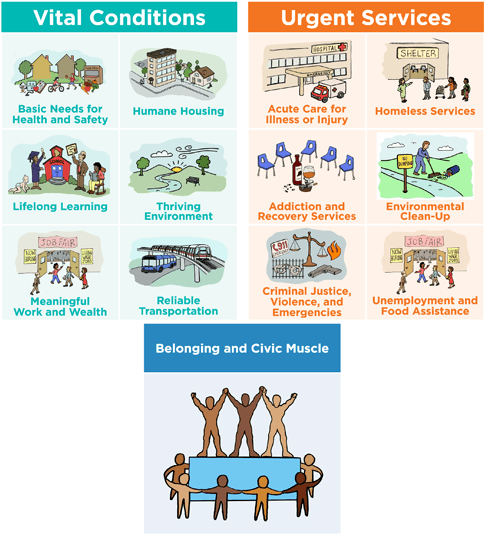
What will it take for stewards to reallocate resources in different ways, over time, to pursue the equitable regional ecosystem they know they need for health and well-being?
Shifting Mindsets
With the region’s current investment portfolio now made more visible, stewards see they are doing great work they can be proud of. And yet when we move to the next part of the exercise, where we ask if that’s their ideal portfolio, stewards begin to have more strategic conversations almost immediately. They begin to consider how investing more in vital conditions could eventually alleviate adversity, avert costly urgent services, and assure more equitable opportunities for everyone to reach their full potential.
They also notice gaps in some urgent service areas and overabundance in others given health needs they currently face (which raises new questions, such as: do current epidemics, such as a mental health or opioid crisis in a region, have enough resources for relevant urgent services?). The sticky note placement also shows stewards where system level changes to bring about vital conditions in a region may be beginning to take shape and where they could expand.
Shifting the stewards’ mindsets in this way is just a start. We’d love to share a fairy tale ending: “and in the end, stewards made a strategy by which the ecosystem that produces well-being in the region could be transformed, and then all the money magically went to the right places to make it happen immediately.” But as with most fairy tales, that would be completely unrealistic. After all, every regional player involved has their own purse and most have vested interests in keeping and growing what’s in it.
Figuring out the Best Ways to Nudge Forward a Shift in Practice
ReThink Health’s Portfolio Design for Healthier Regions project is working with stewards from four regions who have agreed to be our learning partners in figuring out what it would take to begin to shift investment portfolios. These stewards “hold purse strings” (i.e., local governments, philanthropy, corporations, etc.) that may
significantly impact health and well-being in their respective regions. These stewards have “skin in the game,” making them the right partners for ensuring this project can help other stewards interested in pursuing regional portfolios that more effectively cultivate equitable health and well-being over time.
Together, we will develop tools and processes to help stewards:
- Each see their own, current contribution to their regional portfolio and use that as the basis for understanding their own role in the regional ecosystem for health and well-being as it exists today.
- Explore the processes and motivations that enable stewards to connect their own institutional interests and investments with an ecosystem designed to produce vital conditions in addition to meeting urgent needs.
- Understand the constraints inhibiting stewards from varying types of institutions as they are presented with opportunities to make shifts in their mindsets, their role in an interdependent ecosystem, and their approach to allocation of resources.
ReThink Health is working with stewards from four regions who have agreed to be our learning partners in figuring out what it would take to begin to shift investment portfolios.
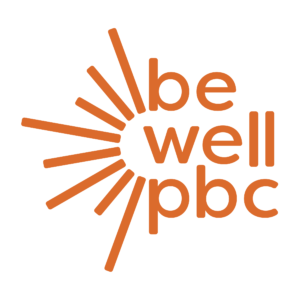

Meet Our Project Team

Anna Creegan

Bobby Milstein

